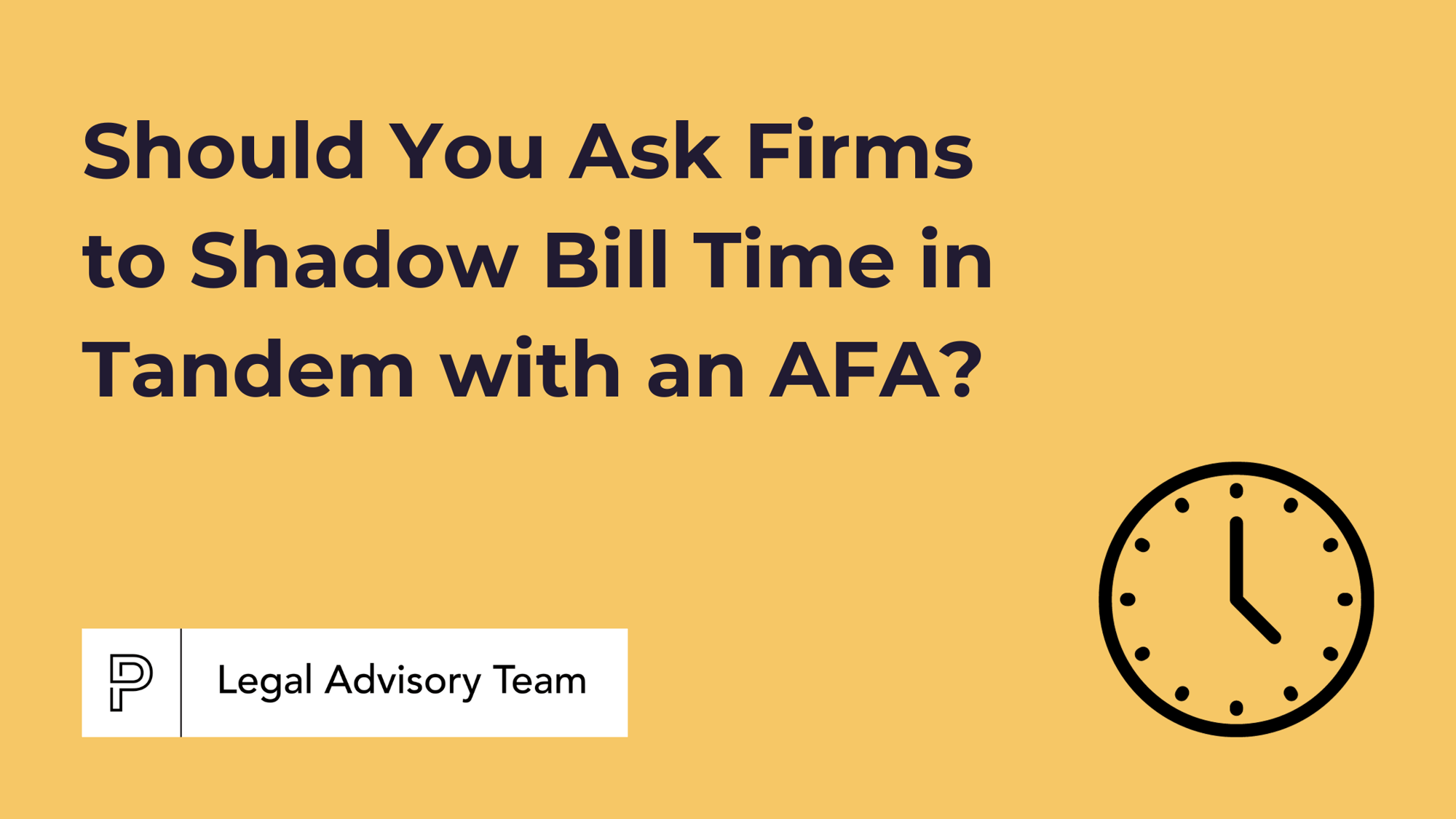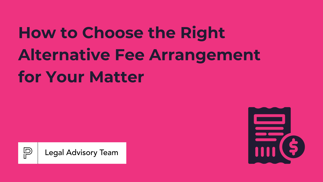AFAs (alternative fee arrangements) are often misunderstood.
Too often, corporate legal departments and law firms default to the billable hour because it seems easier and the only way to price certain matters. But AFAs can be used in many more circumstances than you might realize. In fact, used correctly, AFAs can be used for any legal matter, even the most complex matters.
Law schools have not traditionally taught students about the business side of law, leaving many working within legal without a strong understanding of how AFAs can be used to align incentives for both in-house teams and law firms.
Over $10 billion in law firm proposals have been submitted through the PERSUIT platform since we were founded in 2016. And of the thousands of matters sourced on PERSUIT, seven in ten use some form of AFA.
We know what separates an effective AFA from an ineffective one, in other words.
What is an alternative fee arrangement?
An alternative fee arrangement is any type of fee agreement where a client pays a law firm or an attorney using a fee model that’s something other than a traditional hourly rate. There are many types of alternative fee arrangements, including fixed fee, fixed fee by phase, capped fee, and many others. We’ve gone into more detail about the most used AFA types below.
How does an alternative fee arrangement work?
Alternative fee arrangements are agreed upon before work on a legal matter begins. Typically, the firm and the client will agree on a scope of work, the type of arrangement (fixed fee, capped fee, etc.), and billing and invoicing terms. Something that is uncommon — but a facet of the best AFAs — is a mechanism to handle the inherent uncertainty of legal matters. At PERSUIT we’ve developed an approach called the material deviation clause, which governs how the client and law firm will proceed if something unpredicted happens to put the matter beyond its original scope of work.
Are AFAs bad for law firms?
When done well, AFAs create a win-win situation for both law firms and their clients. So much so that some law firms now operate without tracking billable hours at all. Under fixed fee AFAs, for example, clients get cost predictability and (at times) cost savings. Law firms have the opportunity to innovate how they do what they do without having to justify who is doing what or how long it takes — and potentially increase their profit margins in the process.
What does a successful AFA look like?
A successful AFA will depend on your situation, but here are some of the ways in-house teams are currently measuring success:
1. Reduced cost
Some AFA approaches realign incentivizes between client and firm such that the firm is incentivized to be more efficient. Any savings realized by the firm can be passed back to the client in the form of a lower overall fee amount billed.
2. Budget predictability
Even if there is no net savings in cost, AFAs can be constructed in such a way that they dramatically improve a company’s ability to predict its costs. Finance teams often cite budget predictability as one of the key benefits they see when their legal team increases its use of AFAs.
3. Better legal outcomes
Some AFAs provide added incentives for firms to deliver successful results for the client in a way that leads to better legal outcomes.
4. Well-informed settlement strategy
A better understanding of the fee amount that will be incurred at each phase of a litigation matter can provide the client a clearer picture as to whether it ought to settle and if so, for how much.
5. Alignment of expectations
The sheer act and effort of coming to an agreement on the quantity of major tasks that the client would like performed in a matter can lead to better firm performance because the firm has a clearer understanding of the client’s expectations. Hourly billing encourages laziness by the client in defining the scope of work and the parties may then have to have difficult discussions about why certain tasks were needed. Discussions about what work was done should not happen after it has been invoiced.
6. Reduction in invoice review
Some AFAs can be paid via single line-item invoices, which can reduce that client's administrative overhead related to invoice review.


-1.png?width=2000&name=Webinar%20Template%20(3)-1.png)

-1.png?width=2000&height=1125&name=AFA%20Adoption%20on%20PERSUIT%20(3)-1.png)



